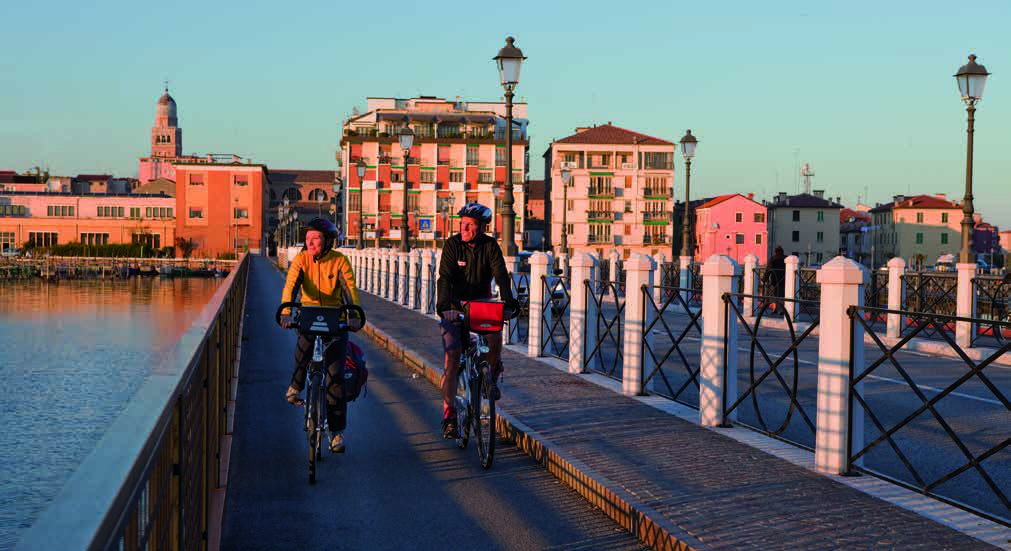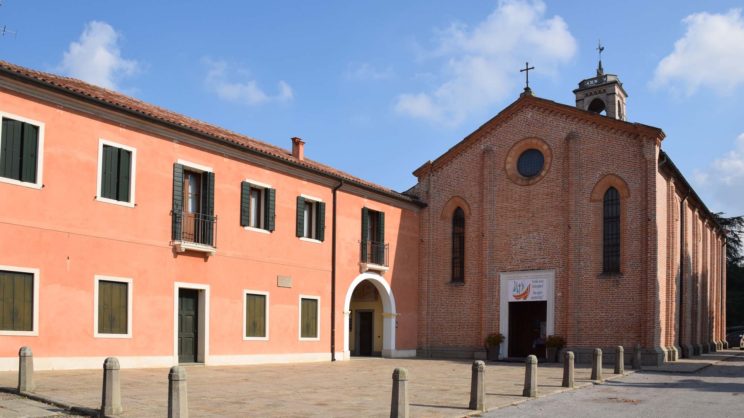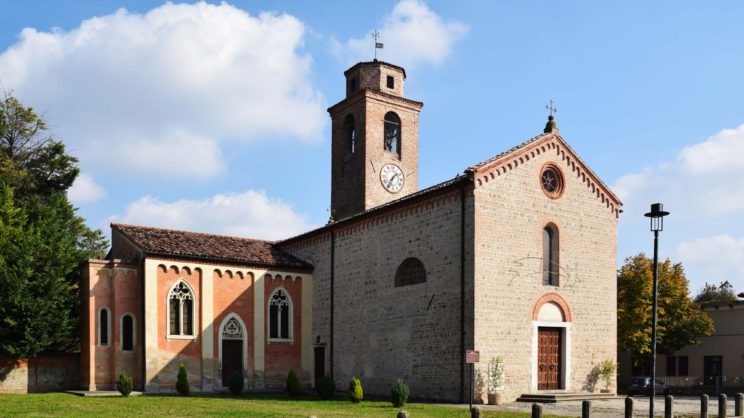Descrizione
Le placide acque dei canali che fanno oggi da sfondo a questo itinerario ciclabile erano un tempo solcate dai “burci”, grandi imbarcazioni commerciali in legno dotate di fondo piatto, che al tempo della Repubblica di Venezia consentivano un’agevole navigazione nei bassi fondali della Laguna e dei corsi fluviali. Attraverso questi canali viaggiavano soprattutto materiali da costruzione (la trachite euganea in primis), lo zucchero e il sale: è proprio da questi ultimi preziosissimi prodotti che la ciclovia prende nome.
I tantissimi siti d’interesse che questo percorso permette di raggiungere rivelano il secolare e strettissimo intreccio tra uomini e vie d’acqua: ai canali, alla navigazione fluviale e ai mulini deve per esempio la propria ragione d’essere il borgo rivierasco di Pontemanco, a Due Carrare.
A Battaglia Terme potrete invece visitare il Museo Civico della Navigazione fluviale, che racchiude e rende manifesto questo indissolubile legame che da secoli connette uomini, fiumi e territorio.
Il suggestivo percorso della Via del sale e dello zucchero si snoda tra Battaglia Terme e Bovolenta lungo il corso del Canale Vigenzone.
Ottimi punti di accesso sono entrambi i capolinea, attraversati rispettivamente dall’Anello Colli Euganei – che corre 250 m a ovest del punto da cui ha inizio la Via del sale e dello zucchero – e dalla Ciclovia fiume Bacchiglione. Oltre ai due centri, che offrono anche diverse possibilità di parcheggio, un altro punto da cui iniziare il percorso può essere quello di Carrara Santo Stefano, dove la ciclovia incrocia la SP17. Nel complesso, il tracciato si sviluppa in sommità arginale e vede l’alternarsi di tratti per lo più ciclabili o a prevalenza ciclabile, che presentano fondo a volte sterrato, altre asfaltato. A circa un terzo della ciclovia si segnala la presenza di una fontana, mentre per eventuali soste si consiglia di raggiungere le località vicine al percorso servendovi delle deviazioni che vi porteranno a scoprire anche il patrimonio storico e culturale di questi affascinanti territori.

The calm waters of the canals that today are the backdrop of this cycle route were once plowed by the ‘burci’, large wooden trading boats with flat bottoms, which at the time of the Venetian Republic allowed easy navigation in the shallow waters of the lagoon and river courses. Along these canals traveled mainly building materials (Euganean trachyte mainly), sugar, and salt: it is from these last precious products that the cycle route takes its name.
The many sites of interest that this route allows you to reach reveal the centuries-old and very close intertwining between man and waterways: the riverside village of Pontemanco, in Due Carrare, for example, owes its raison d’être to canals, river navigation, and mills.
In Battaglia Terme, you may visit the Civic Museum of River Navigation, which encloses and manifests the indissoluble bond that has connected men, rivers, and territory for centuries.
The evocative Salt and Sugar Route runs between Battaglia Terme and Bovolenta along the course of the Vigenzone Canal.
Both are excellent access points crossed by the Euganean Hills Ring – which runs 250 m west of the point where the Salt and Sugar Route begins – and the Bacchiglione River Ciclovia. In addition to the two centers, which also offer various parking facilities, another point from which to begin the route is Carrara Santo Stefano, where the cycle route crosses the SP17. Overall, the way runs along the top of the dam and alternates between stretches that are mostly cyclable or predominantly cyclable, with a surface that is sometimes dirt and sometimes asphalt. There is a fountain approximately one-third of the way along the track. At the same time, for possible stops, we recommend you reach the localities close to the road using the detours that will also lead you to discover these territories’ historical and cultural heritage.
Video di presentazione
E’ possibile vedere due video dedicati al percorso cliccando sul titolo. I video si apriranno in una nuova finestra.
You can watch videos dedicated to the course by clicking on the titles of the covers below. The videos will open in a new window.












